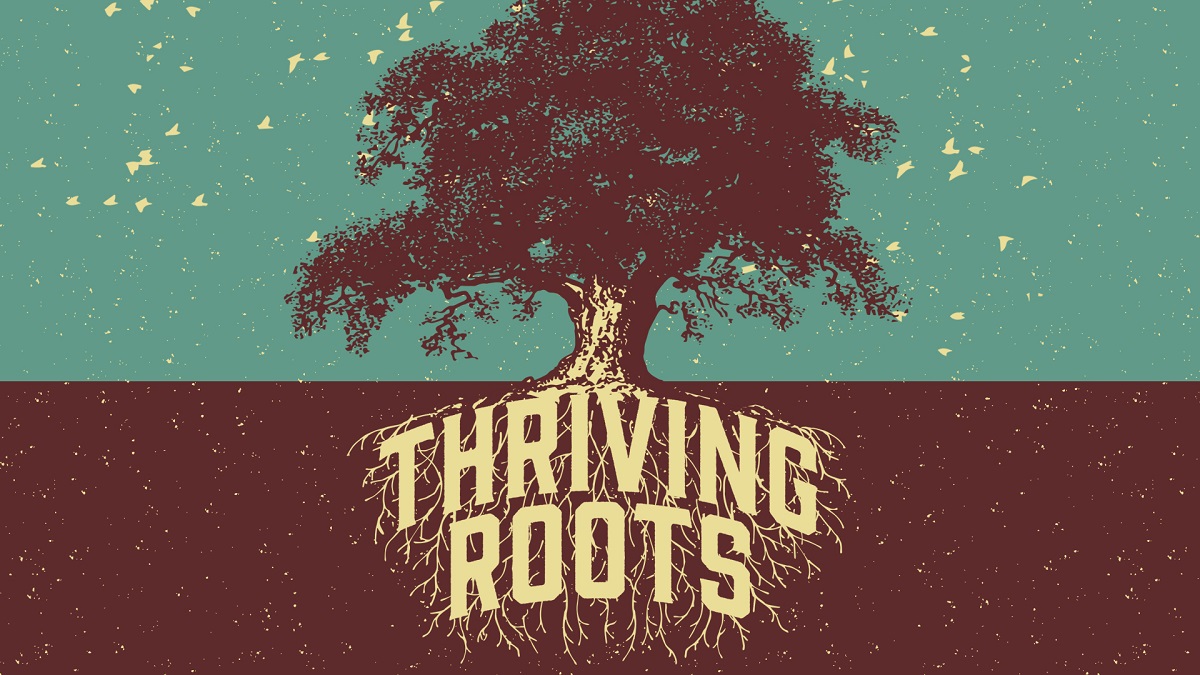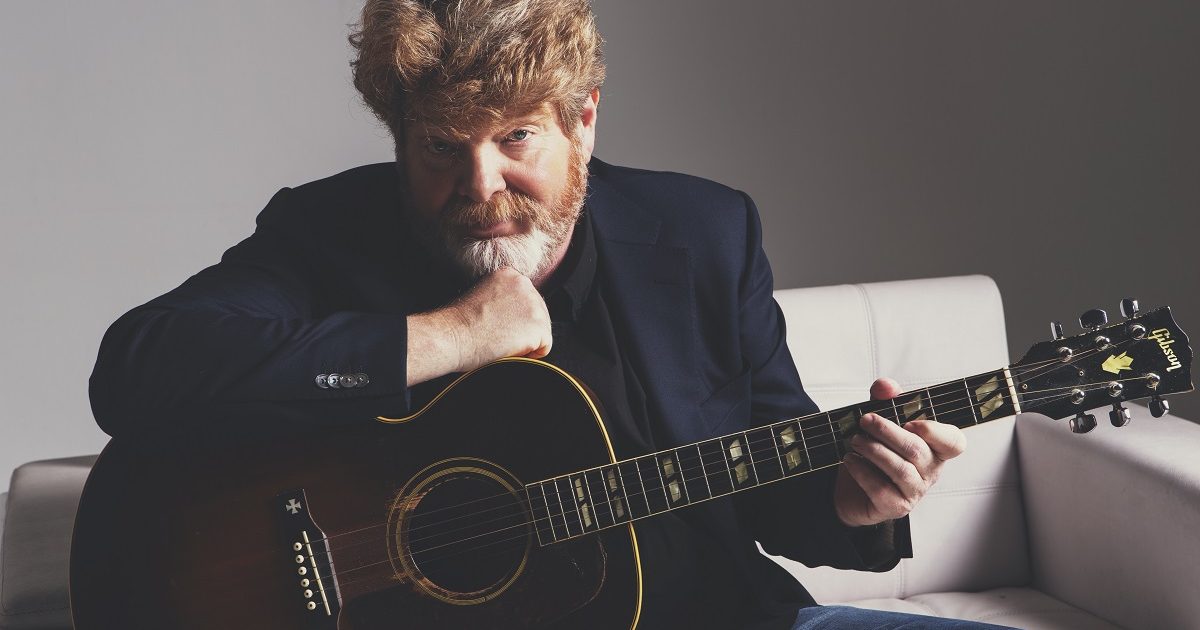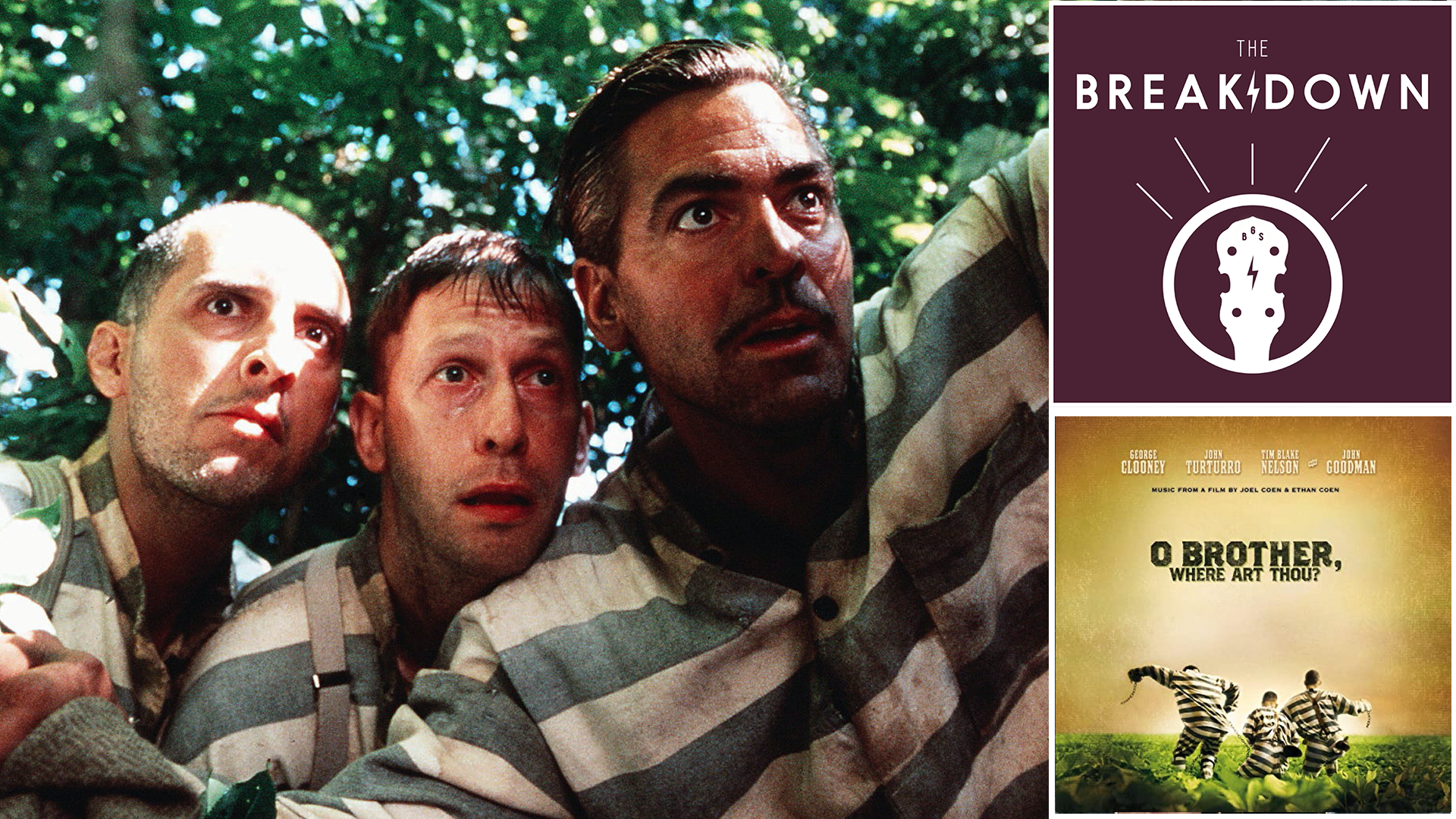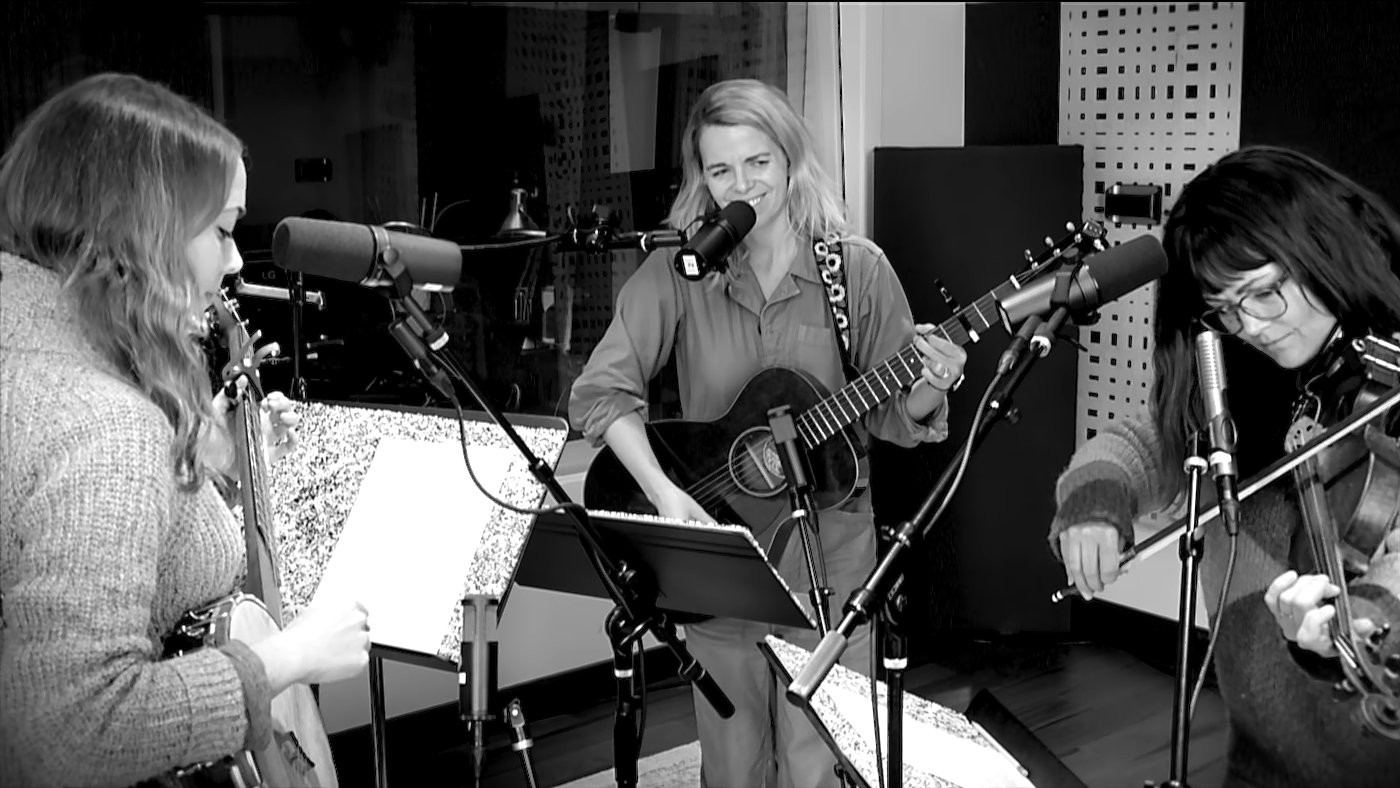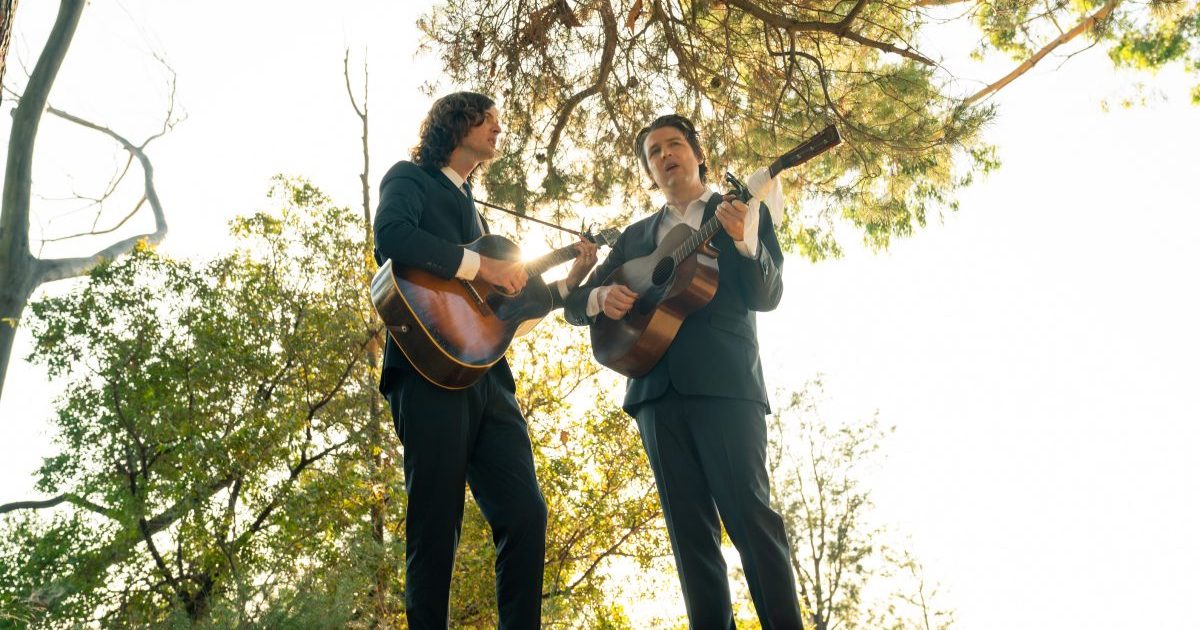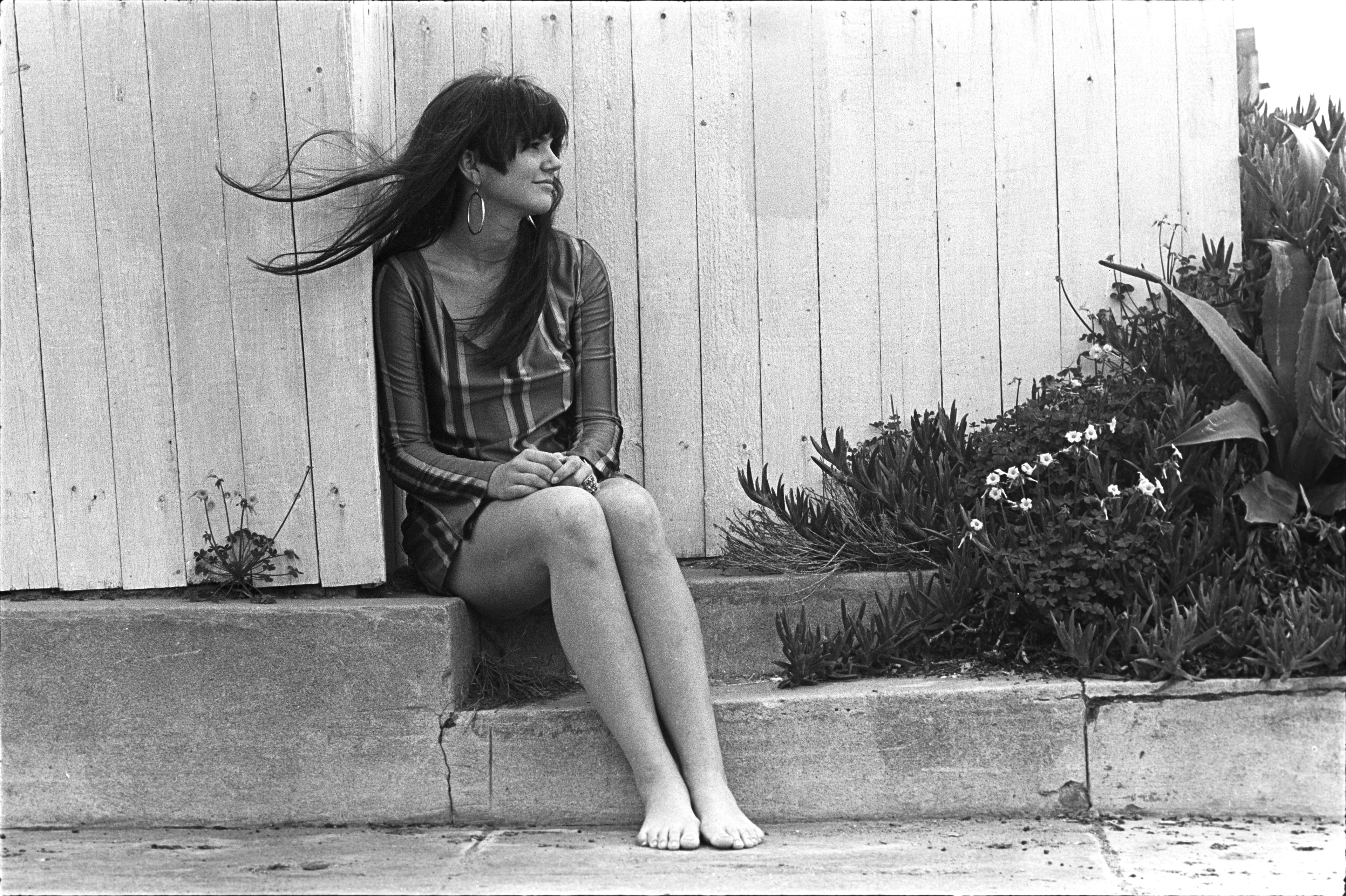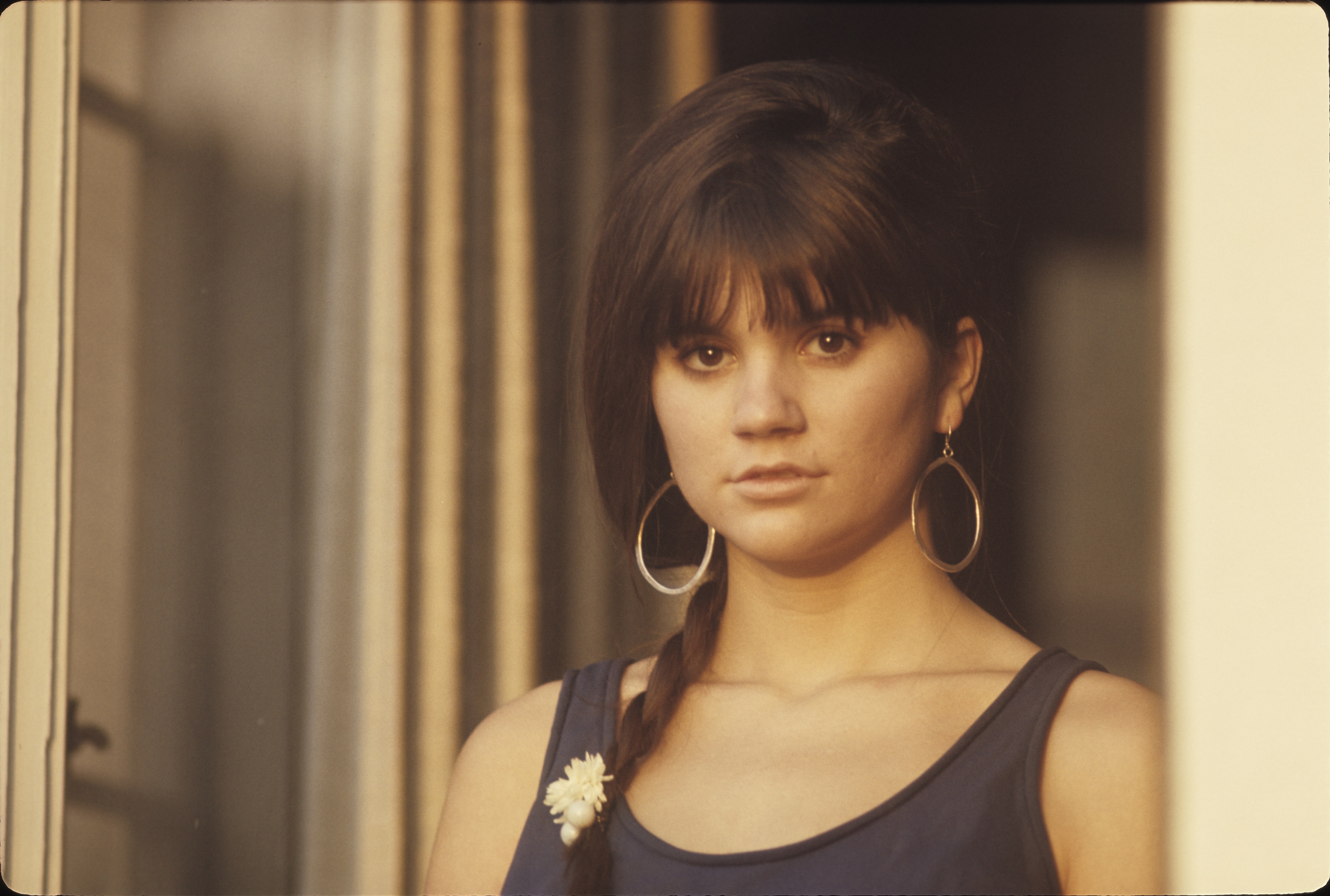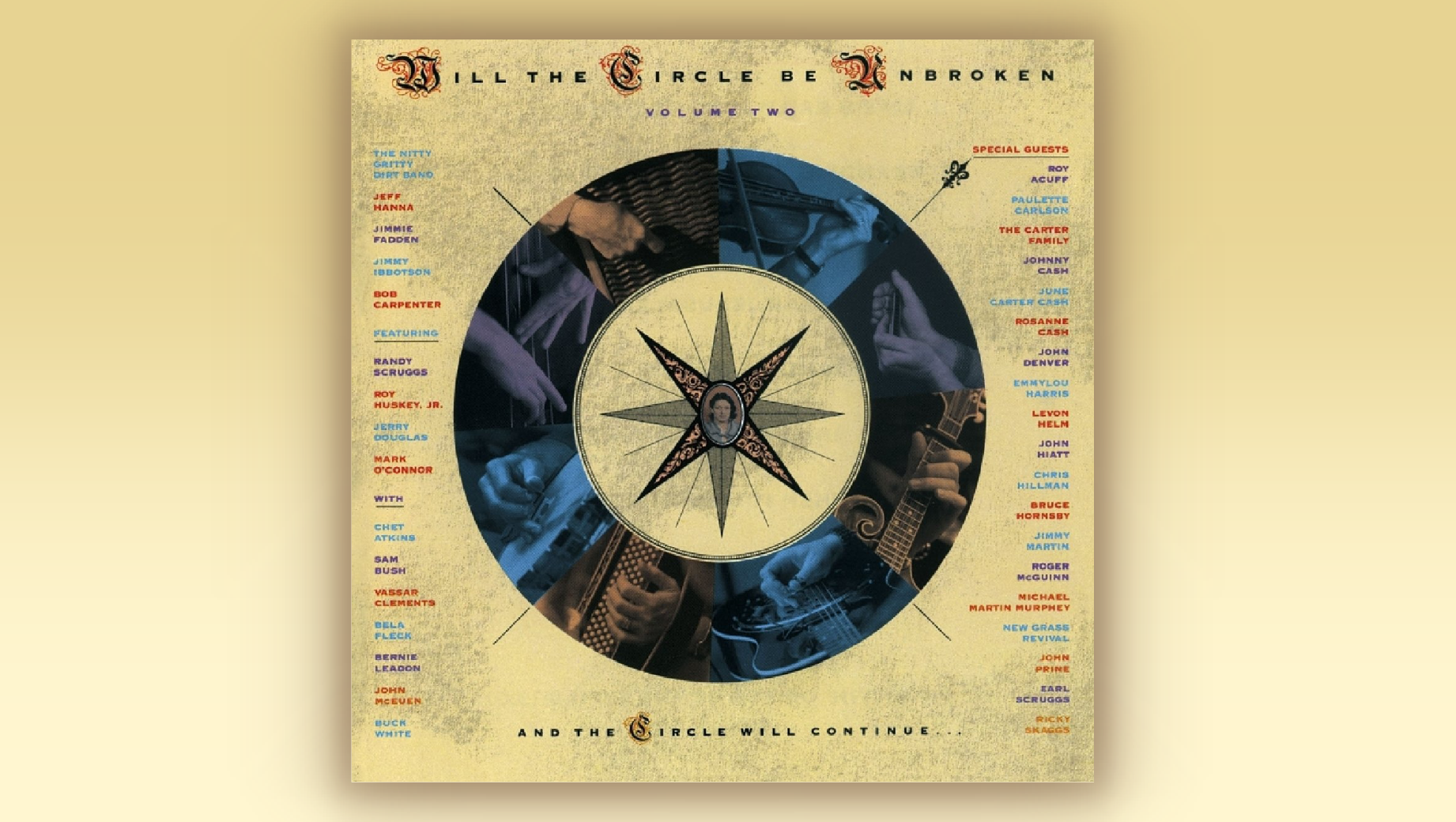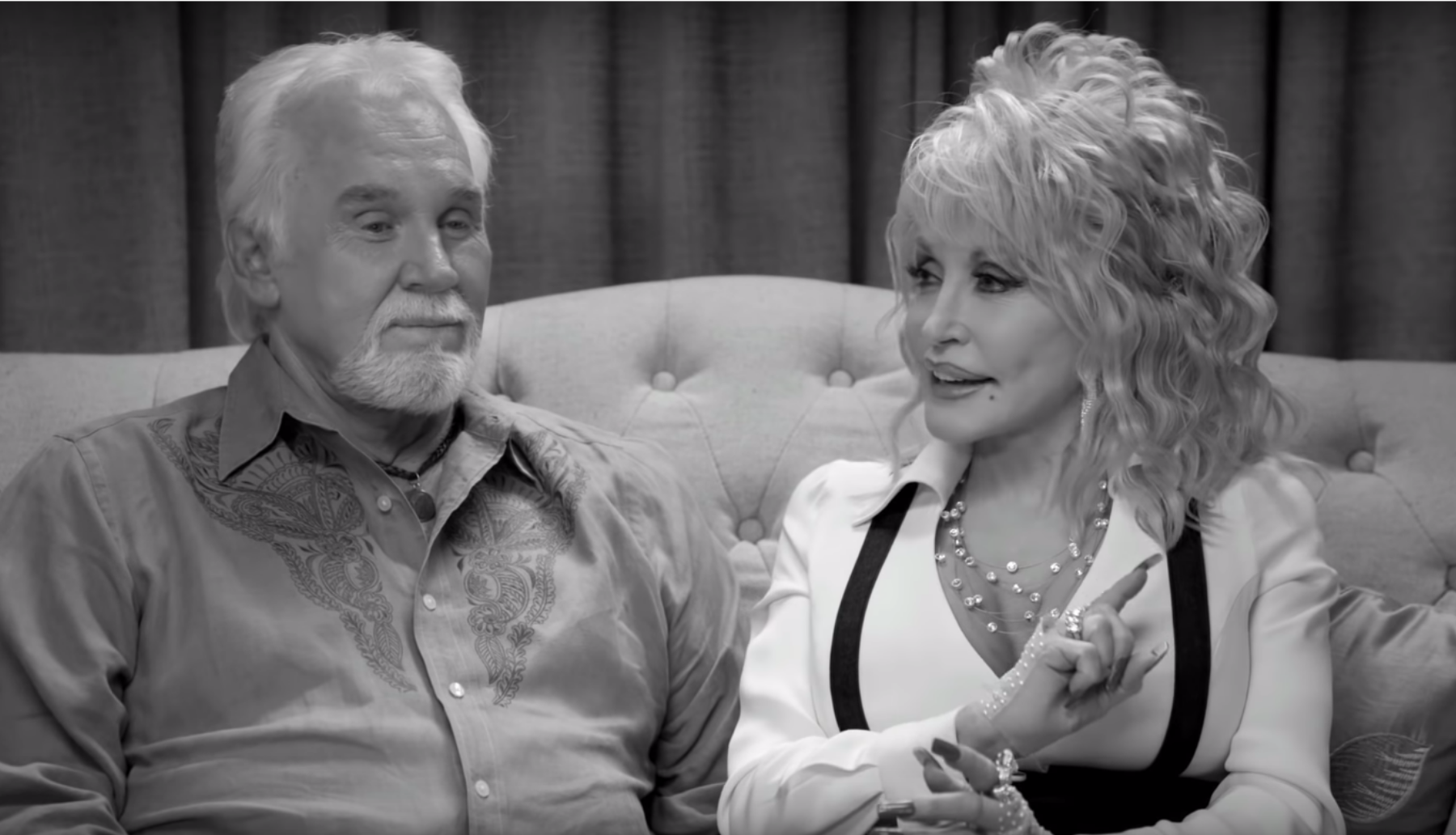Although in-person plans for Americanafest are on hold this year, fans of roots music can still take part in celebrating the music, no matter where they are.
From September 16th to the 18th, Thriving Roots: A Virtual Community Music Conference will host intimate conversations between pairings you won’t find anywhere else.
In August, the Americana Music Association Foundation (AMAF) revealed programming featuring director Judd Apatow in conversation with The Avett Brothers; Bob Weir with Oteil Burbridge; Béla Fleck with Sierra Hull; and Sarah Jarosz with John Leventhal and Chris Thile. The latest programming information also includes talks on empowering today’s creatives, developing streaming strategies and musicians in recovery.
https://www.instagram.com/p/CD1R4d_BUzV/
Apatow will sit down with The Avett Brothers to discuss the intersection of film and music, as well as the fine line between fine art and commerce. In 2017, Apatow co-directed the band’s critically acclaimed documentary, May It Last: A Portrait of The Avett Brothers. Since then, The Avett Brothers have released their new album, The Third Gleam.
The music that fans know and love from their favorite artists simply wouldn’t exist without the innovative musicians who came before them. Weir will sit down with fellow Dead & Company member Burbridge as they explore the inspirations and influence Black musicians have had on the Grateful Dead.
Now more than ever, musicians continue to push and blur the confines of genres to create the art they want to make. Fleck and Hull will speak to how roots music transcends and connects with a wide range of audiences during “Music Without Boundaries.” When it comes to creating that art in the studio, a producer’s ability to understand an artist’s vision is an integral part of the creative process. Moderated by Thile, Jarosz and Leventhal will delve into the connections forged between the artist and producer evident on her latest project, World on the Ground.
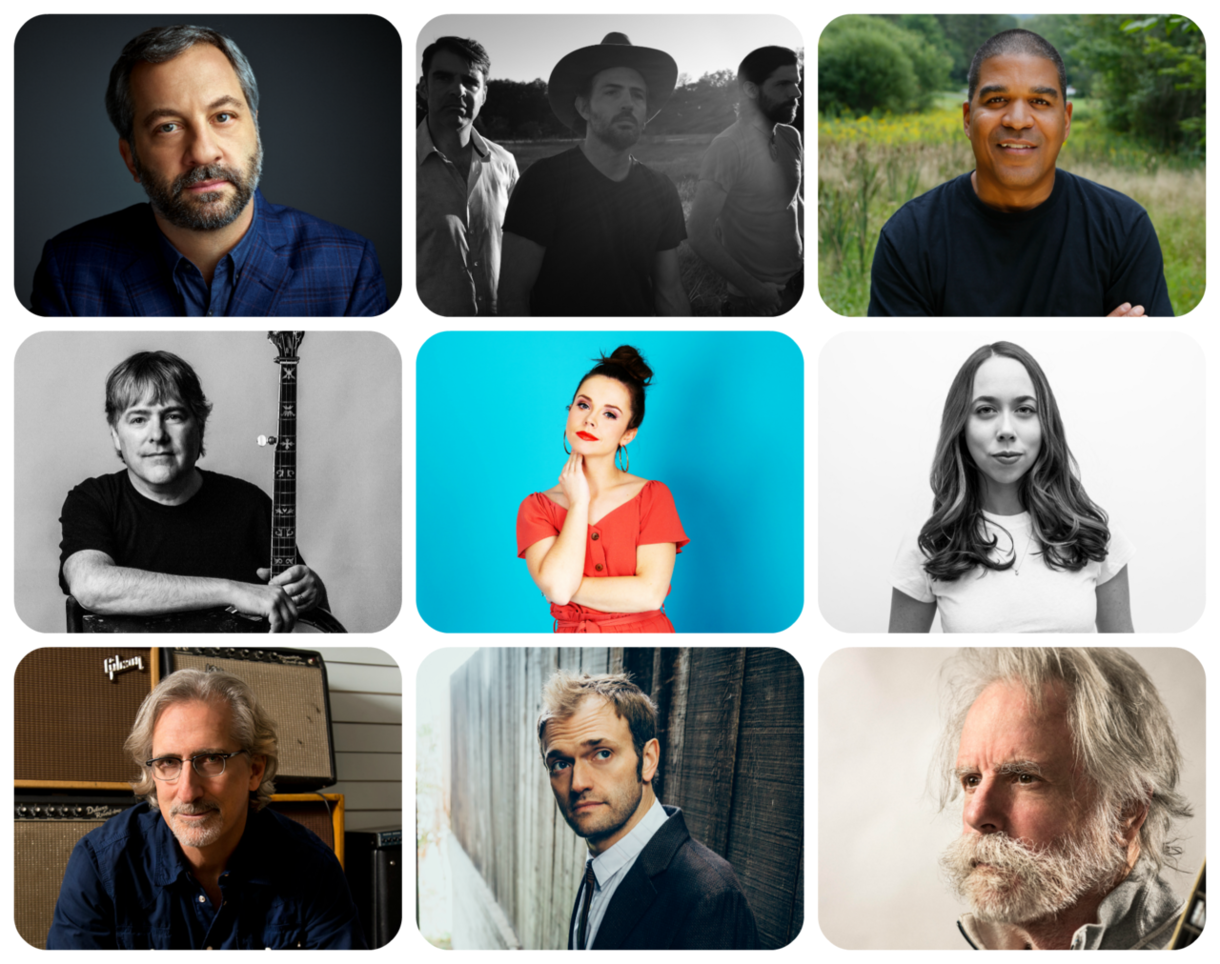
Additional new programming includes “Independent Control: The Power of Collaboration,” an inside look into how Americana industry professionals are empowering their independent artists to retain full creative control and the benefits of assembling a hand-picked team. Moderated by Jessica Nicholls (Metropolitan Groove Merchants), this discussion will include Blair Clark (Brooklyn Basement Records), Maria Ivey (IVPR) and Michelle Szeto (Paquin Entertainment Group).
In the streaming era, an abundance of digital resources can be found at the fingertips of industry and artist professionals, but how does one optimize those helpful tools? Led by Mike Fabio (New West Records), “Building a Streaming Strategy in 2020” rounds up Charles Alexander (Systemic), Margaret Hart (YouTube), Margaret Jacobi Lee (AMFM Management), Laura Ohls (Spotify) and Amy Wright (DittyTV) for a talk on developing real-world strategies that lead to increasing listenership and growing a solid fanbase.
Presented by Promises Behavioral Health, “The Show Must Go On: Musicians in Recovery” will find artists Phil Bogard and Jaime Wyatt in conversation with Shireen Janti (MusiCares) and Shane Ramer (That Sober Guy Podcast) about the road to recovery while offering how to find treatment and how others can take practical steps toward becoming a sober creator.
https://www.instagram.com/p/CDRhNsvBq-n/
Previously announced Thriving Roots programming includes intimate conversations between Brandi Carlile and Yola; Emmylou Harris and Ken Burns; and Jackson Browne and Mavis Staples. Rosanne Cash will bring together Ry Cooder, Angela Davis, Bonnie Raitt and Alice Randall for “Love and Vigilance,” a look at the history of protest music.
Moreover, RIAA Chairman/CEO Mitch Glazier and COO Michele Ballalynte will share an update on the music industry during “Record Setting” while looking at current trends and sharing their outlook. There will also be artist-friendly songwriting workshops and case studies like Mary Gauthier’s “Accessing the Universal in Your Songs: Mercy Now,” Taj Mahal’s “Music Is the Healing Voice” and an artist development breakdown with Black Pumas.
With over 50 panel discussions and more than 40 special events filled with music, Thriving Roots will bring the Americana music community together from across the world for three full days of engaging insight from its top industry professionals and leading artists.
Adding to the slate of artist conversations music fans won’t want to miss is Linda Ronstadt offering a behind-the-scenes look at Linda and the Mockingbirds, a new documentary that chronicles her 2019 journey with Jackson Browne and Mexican-American song and dance troupe Los Cenzontles to her grandfather’s hometown in Mexico, resulting in a tale of immigration, family and music. Moderated by esteemed journalist Randy Lewis, attendees will be able to watch the film screening and hear insight from the musical icon alongside the doc’s producer/director James Keach and Los Cenzontles founder Eugene Rodriguez.
The Lumineers’ Jeremiah Fraites and Wesley Schultz will sit down with renowned filmmaker M. Night Shyamalan for an engaging discussion on the importance of retaining creative control of your art. In addition, Kathleen Edwards will speak with acclaimed Program Director Rita Houston (WFUV) about her new album Total Freedom, which marks her triumphant return to music after an eight-year hiatus from the business.
The common threads and differences of the Americana and country music worlds will be explored during “Ladies, Your Roots Are Showing,” presented by Change the Conversation. Moderated by CTC co-founder Tracy Gershon with freelance music journalist Marissa Moss, this panel session rounds up Brandy Clark, Tanya Tucker and Lee Ann Womack to share how they’ve been able to successfully navigate both worlds while maintaining their artistic integrity. They’ll also reveal the challenges and memorable moments they’ve experienced during their respective careers.
Reigning Legacy of Americana Award (co-presented by the Americana Music Association and the National Museum of African American Music) recipient Rhiannon Giddens joins NPR’s Ann Powers and the legendary Taj Mahal to discuss the theme of “Music is the Healing Voice.”
Music buffs should also tune into a special virtual edition of “Songlines Music Meeting,” an Americanafest fan-favorite. Sean Coakley and Leslie Rouffé will once again invite listeners to hear mostly unreleased tunes and score them during the live session, leading to a discussion on how music programmers in various media formats select the songs they feature.
Aside from plenty of educational and networking opportunities, Thriving Roots attendees will have a chance to unwind and recharge with immersive virtual events and lifestyle breaks. Valerie June will walk folks through a guided meditation that explores how to center oneself using ancient teachings. Big Machine Label Group will spotlight The Cadillac Three, Sheryl Crow and Ray Wylie Hubbard with some must-see musical performances.
During “Aw Heck: An Oh Boy Music Break,” join the late John Prine’s own record label Oh Boy Records for a celebration of their talented roster which includes Tré Burt, Arlo McKinley, Dan Reeder and Kelsey Waldon. For “Come Hear NC,” experience the rich music of North Carolina featuring Hiss Golden Messenger, Jim Lauderdale, Mandolin Orange, Steep Canyon Rangers and more.
Pictured above in composite: Top Row (L-R): Judd Apatow, The Avett Brothers, Oteil Burbridge; Middle Row: Béla Fleck, Sierra Hull, Sarah Jarosz; Bottom Row: John Leventhal, Chris Thile, Bob Weir
Interviewed by His Daughter, Mac McAnally Recounts a ‘Lifetime’ in Music
Mac McAnally is a highly-decorated and prolific multi-instrumentalist, producer, songwriter, and artist. He tours with Jimmy Buffett’s Coral Reefer Band, plays on countless sessions in Nashville and Muscle Shoals, and produces a number of independent artists, too. But more important to me, he’s my dad. And he’s a great one. On the occasion of the release of his new album, Once in a Lifetime, we discuss guitars, bluegrass, moments of social change, why he covered a Beatles song, and the process of making this record amidst a pandemic. And though I get to talk to him most days of my life, it is heartening to hear him put a fine point on his eternal optimism.
BGS: Growing up, music was constant in the house and one of the most pervasive cover songs you played was “Norwegian Wood.” What do you think it is about that song that sticks in your craw and drew you to record it?
Mac McAnally: As you know, I’ve always loved that song. In the very first line, from a lyric standpoint, “I once had a girl/Or should I say/She once had me,” you can tell any story in the world after that. That is something that I subconsciously try to do and have since the beginning.
Specifically, why I recorded it is because I bought an octave mandolin about four years ago. I did a show with Sarah Jarosz and she had one and let me play it and I thought, “I am going to have to get me one of these.” I always feel like I have to do something to justify the purchase so I play it on as many sessions as I can to try to amortize the cost, but I also came up with this new way to play it that is kind of a cool arrangement that I’ve never heard. I don’t in any way challenge the Beatles version and don’t mean any disrespect; I’m trying to find ways to justify the guilt of buying an octave mandolin.
On almost every record that you’ve made there’s a nod to bluegrass, like “Brand New Broken Heart” on this record. Who are some of your biggest bluegrass influences?
I have to preface this by saying I am a bluegrass fan, I am not a bluegrass player. Anything that I might be doing would just be trying to pay homage to what the greats can do. I’ve gotten to play with some of them, which I count high among the blessings of my life. When I wrote “Brand New Broken Heart,” I envisioned I would someday pitch it to Ricky Skaggs or Dailey & Vincent. I recorded it because I was a lazy song plugger who never pitched it to anybody.
Doc Watson was one of mine and my dad’s heroes. He was sort of my intro to real bluegrass. And all the way through my life, Emmylou Harris. We played her songs in bands when I was a teenager. Bryan Sutton is just frighteningly good. I can’t even fathom what he is doing, let alone try to do it myself. He inspires me to go get a pick out and play differently than I play because I love so much of what he does. And I’m crazy about I’m With Her.
What brought about recording “Changing Channels” for this record?
I have always loved that song. It is the second song that Jimmy (Buffett) and I wrote together. We wrote it in one my favorite places I have ever been. He had a spot down in Thomasville, Georgia, with a big porch. As you know I’m a porch guy. We sat out on the porch and wrote that song. He did a great version of it on Off the See the Lizard and I honestly never imagined myself cutting it but I love to play it. It has worked its way into my shows over the last ten years and his fan base will come up after and ask which one of my records the song is on. They had cash out trying to buy it and I don’t have it. You know better than anybody how terrible of a businessman I am, but eventually enough people tried to buy a version of it that I listened.
You have collected a lot of guitars, and in various ways: some saved from landfills, some gifted, some cast for you by friends and colleagues. How do you pick which guitars make your records?
It is certainly not an exact science but sometimes it is the guitar that the song came out of. The main thing that has always made me select guitars is if I think they have songs in them. I would happen to be holding them and a couple of my stories got mashed with them. In more cases than not, if I wrote a song on a guitar, that’s the one I’ll record. You end up learning over the years. In the same way when you are photographing someone, you learn what the best side of their face is. … A Gibson with dead strings is an awesome rock ‘n’ roll rhythm guitar. A Martin with new strings is an awesome fingerpicking guitar.
We are in a moment of social change. Music has the power to both inspire and record change. You moved to the Shoals in the ‘70s. Thinking back on those early days in the studio, what was it like in those moments?
Playing music in Muscle Shoals was extremely encouraging from the standpoint of equality. They didn’t really think of it in terms of race. Music transcended that. And I love that. And I still love that. I’m standing in Muscle Shoals right now proud to be part of that. You can be encouraged on some levels and discouraged on some levels and I am both of those things. I haven’t in my life ever thought that I was better or worse than anybody else and I look forward to that being a more prevalent vantage point for everyone.
I want to challenge you on that a bit. One of your dear friends and longtime collaborators, Ralph MacDonald, told you that he never felt comfortable coming to Muscle Shoals and we’ve heard from more folks that it wasn’t an inviting place to come collaborate, so a lot of those musicians opted for Detroit or Miami. With that added perspective, does it make you feel differently about the time?
Absolutely, it makes me more aware of the context. As I said, Muscle Shoals would have been advanced in terms of racial relations in the music community in the South. As I look back now, I realize that doesn’t mean it was great. It was just better relative to the surroundings.
Ralph and I, we were like brothers. He told me he would’ve been scared to death of a big red-headed dude from Mississippi. And he was a Black man from Harlem. I could not have imagined that we would connect on as many levels as we did. We both had misconceptions that got better. He was one of my heroes. He was one of the best percussionists that ever played. And I loved him. It is hard to get into racial discussions without stirring stuff up. But we made each other better. Music is one of the best ways to bridge across preconceptions. I think it’ll play a big part of getting us the rest of the way home. ‘Cause we ain’t there yet.
Stirring stuff up is the way we make progress.
That’s true and they are not easy discussions. I don’t think of myself as someone with prejudices, but when I think back, some of the things I laughed at growing up as a kid in Mississippi I’m embarrassed of. And I was mainly laughing because everyone around me was laughing, but when I think of what it was we were laughing at, it is embarrassing. I don’t really want to talk about it, I just want to be a better person, because I know it was wrong. But you are right. Talking about it is better. Air it out.
What does it feel like to release an album in a pandemic?
Well, not speaking ill of either thing, but I hope it is a one-time thing. I hope I never have to try to beat a pandemic album with a second pandemic album. My records are normally made in what I call “the cracks of time.” I make them in the cracks of my schedule because I work full-time as a Coral Reefer, a fair amount of time as a session musician for other people, writing songs for other people and producing other folks. But because of the circumstance of this record, it is really special to me because I got to sit and think about what I felt was important and what was not. I wouldn’t wish a pandemic on the world just to get extra time to make my record. I think maybe next time I’ll just take the time on my own.
Even in your darkest lyrics, there is a balance that shows your shining optimism. We are surrounded by a heavy dose of dark right now. Are you feeling optimistic?
Absolutely. I absolutely am. I wish we weren’t where we are right now and that everyone could see that it is better to find a way to coexist than it is to hate one another. I’m not someone who has any room for hate. As you recall, I don’t even like the word. I’ve probably pestered you about it for your entire life. Actual hate hurts me. We’ve been celebrating the life of John Lewis the last few weeks and John is a great example of figuring out a way to make it better by not hating the people who hated him. I think things are going to get better and I intend to try to help.
Erin McAnally is a regular contributor to The Bluegrass Situation
Photo Credit: Jeff Fasano
The Breakdown – ‘O Brother, Where Art Thou?’
This week, hosts Patrick M’Gonigle and Emma John dissect the bluegrass-centered soundtrack to the Coen Brothers’ film, O Brother, Where Art Thou?, with a little help from their friends Chris Thomas King and Dan Tyminski.
LISTEN: APPLE PODCASTS • MP3
O Brother, Where Art Thou? was the movie that brought bluegrass to a new generation, and sent dozens of musical careers into the stratosphere. Fake beards not required.
Season 2 of The Breakdown is sponsored by The Soundtrack of America: Made In Tennessee. Visit TNvacation.com to start planning your trip.
WATCH: I’m With Her Celebrate Dolly Parton, ‘Trio II’ with “Lover’s Return”
The beautiful voices of I’m With Her paid special tribute to the illustrious icon Dolly Parton in their latest visit to the studio for Live from Here. In an intimate performance, I’m With Her sing “Lover’s Return,” originally a Carter Family song, which Dolly, Emmylou Harris, and Linda Ronstadt revived only a few years before the turn of the century on Trio II. Now as a new decade is settling in, I’m With Her look back and remember, breathing new life into music that inspired so many — including Sarah Jarosz, Aoife O’Donovan, Sara Watkins, and of course, Dolly herself.
MIXTAPE: The Milk Carton Kids, In Harm’s Way
“There’s a paradox at the heart of great harmony singing: when voices combine in so elemental a way that they disappear into each other, the effect is dizzying, mystifying, disorienting, and yet by far the most satisfying sound in music. Here’s a VERY incomplete playlist, spanning a few generations, of bands defined by their harmonies, who set my mind spinning with their vocal arrangements, execution, and pure chemistry as singers.
“Full disclosure: my own band is included aspirationally and for the sake of self-promotion. Author’s Note: Sorry not sorry for naming this playlist with a pun.” — Joey Ryan, The Milk Carton Kids
The Jayhawks – “Blue”
That unison in the first few lines is so thrilling cause you know what’s about to happen, and when the parts separate it just feels so good.
Gillian Welch – “Caleb Meyer”
The harmonies and Dave’s playing are so intricate in this song you’d be forgiven for glossing over the lyrics, which tell the story of an attempted sexual assault victim killing her attacker with a broken bottle. Check out the Live From Here version with Gaby Moreno, Sarah Jarosz, and Sara Watkins, and catch the alt lyric subbing “Kavanaugh” for “Caleb Meyer” about halfway through.
Gram Parsons & Emmylou Harris – “Hearts on Fire”
Just one of the all-time great duets. Who’s singing the melody, Emmylou or Gram? Hint: trick question.
Our Native Daughters – “Black Myself”
Do all supergroups hate being called supergroups? I wouldn’t know. Our Native Daughters is a supergroup though, and the power of their four voices in the refrains and choruses of this one are all the proof I need.
Dolly Parton, Linda Ronstadt, & Emmylou Harris – “Those Memories of You”
It’s insane that three of the great singers of their generation just so happened to have this vocal chemistry. Their voices swirl together like paint and make a color I’ve never seen before.
boygenius – “Me & My Dog”
Favorite game to play when this song comes on is “try not to cry before the harmonies come in.” Very difficult. Impossible once they all sing together.
The Smothers Brothers – “You Can Call Me Stupid”
GOATS. IDOLS. Favorite line is, “That’s a pun isn’t it?” “No, that really happened.”
The Milk Carton Kids – “I Meant Every Word I Said”
My band. Imposter syndrome. We recorded the vocals on this whole album into one mic together. It helps us disappear our voices into each other’s.
Crosby, Stills, Nash & Young – “Carry On”
For me, CSNY are the pinnacle of that disorienting feeling harmonies give you when you just have no idea what’s going on. I’ve never been able to follow any one of their individual parts and I LOVE that.
Sam & Dave – “Soothe Me”
When the chorus comes around and you can’t decide which part you want to sing along with, you know they did it right.
Louvin Brothers – “You’re Running Wild”
The Louvins sound ancient to me. Primal. The way their voices rub against each other in close harmony is almost off-putting but I’m addicted to it.
The Highwomen – “If She Ever Leaves Me”
There’s probably even better examples of the Highwomen doing that crazy thing with their four voices where they become one entirely unique voice, all together, but this song is just so good I had to go with it. And the blend in the choruses is just as intoxicating as it gets.
I’m With Her – “See You Around”
Really an embarrassment of riches in modern music on the harmony front. Hearing I’m With Her perform around one microphone drives me insane with the best possible mix of confusion, jealousy, and joy.
Mandolin Orange – “Paper Mountain”
The melancholy is so satisfying when either one of them sings alone, and then they bring that low harmony and I have to leave the room.
Skaggs & Rice – “Talk About Suffering”
This whole record is a masterclass in two-part harmony. It changed my entire concept of singing. I’m Jewish, but when this song comes on it makes me sing wholeheartedly of my love for Jesus.
The Everly Brothers – “Sleepless Nights”
The absolute masters of both parts of a two-part harmony standing alone as the melody. Credit to Felice and Boudleaux for that, for sure, but the Everlys executed it better than anyone before or since.
Simon & Garfunkel – “59th Street Bridge Song (Feelin’ Groovy) — Live at Carnegie Hall, New York, NY – July 1970
This is far from my favorite S&G song, but this live version especially showcases what geniuses they were at arranging crossing vocal lines, unisons, parallel melodies, nonsense syllables and swirling harmonies. Plus the nostalgic “awwww” from the crowd gives me hope that a sensitive folk duo could one day achieve mainstream success again.
Shovels & Rope – “Lay Low”
This starts out as a song of profound loneliness with just one voice singing, then the harmony comes in and it gets… even lonelier? Harmony is magic.
Boyz II Men – “End of the Road”
I’m a child of the ‘90s, don’t @ me. I never realized at all those 8th grade slow dances that we were subliminally being taught world-class harmony singing and arranging. Good night.
Photo Credit: Jessica Perez
Linda Ronstadt Talks Bluegrass (Part 2 of 2)
In honor of the new documentary film, Linda Ronstadt: The Sound of My Voice, and in appreciation of her connection to bluegrass — and in an attempt to shout it from the proverbial rooftops! — we’re reprinting Dan Mazer’s 1996 Bluegrass Unlimited interview with Ronstadt split into two parts, but in its entirety on BGS. Special thanks to the team at Bluegrass Unlimited for partnering with BGS to spotlight how bluegrass has touched one of the most important and truly iconic voices to ever grace this planet.
(Read part one of “Linda Ronstadt Talks Bluegrass” here.)
“Linda Ronstadt Talks Bluegrass”
By Dan Mazer. Bluegrass Unlimited, June 1996
…Our conversation moved to a discussion of Alison Krauss’ musicianship. Krauss seems to have an incredible variety of influences, which come out when she wants them to. “And in an appropriate manner,” Ronstadt continued. “There seems to be a general agreement among all the people that I know – whose various subjectivities are very strict and very demanding – that Alison has the best taste of any of those people.
“Every fiddle player that I’ve ever worked with will be tempted to play sound(s) like donkeys braying; or just play too much – play ‘flash’ licks in an inappropriate manner. (I call it) ‘The Paganini Syndrome.’ And Alison never is.
“Her pitch is completely stunning! I’m a pitch nazi, and she’s even a little more strict than I am, in terms of pitch. And the thing that I like the very best about her playing is her rhythm. She’s got that great, easy, loping sense of the groove that bluegrass players generally don’t have. When it’s right, of course, it’s got a great swing to it. But bluegrass players have a tendency to get a little stiff and a little on top of the groove. And she never does! I don’t think she’s played with drummers that much, but we put her together with Jim Keltner, and it was just an amazing thing. She’s got the same sense of the groove that he does, and he has the effortless pocket. I consider her as good as any musician I’ve ever worked with. My cousin (David Lindley) said she was his favorite fiddle player ever. And I love her. And also, she owns Maria Callas’ bed! (Laughter) I don’t know why, or how she managed to get her hands on it, but she did. I was jealous. I wanted to be the one to get it. Emmylou Harris and I are both Maria Callas fans. Slobbering, drooling Maria Callas fans!”
When asked to comment on other bluegrass acts, Ronstadt confessed that she doesn’t listen to any modern music of any style. In fact, she was unfamiliar with many of the major country acts. Nor had she ever heard of the IBMA. “Honestly, the only ones I know (are) Ricky Skaggs, Alison, and (the) Seldom Scene,” she said. “But before that, it really was those original guys (Flatt and Scruggs and Monroe). I mean, it was such a short-lived era. And before that, the Blue Sky Boys, which wasn’t really bluegrass, but which really sorta fed right into it. I love those guys, and I listen to the Louvin Brothers a lot. So I listen to all the stuff that led right up to it.
“I know very little of any kind of contemporary music. I just don’t. I listen to NPR, and I listen to Maria Callas and them, and I listen to a lot of Mexican music, and that’s about it. And if it penetrates through that it’s usually because Emmy calls me up, or John Starling calls me up, or Quint Davis. Quint Davis is the guy that runs the New Orleans Jazz and Heritage Festival, and he put on that thing on the Mall for the inauguration. That’s where I saw Alison. I was just blown away by her!
“I don’t know modern stuff. I haven’t a clue. It seems like when we did the ‘Trio’ record, nobody was interested in traditional music. And then that record was pretty successful, and at that point, Ricky Skaggs was extremely successful, but all of a sudden, I don’t know. I don’t watch this type of stuff on television. I haven’t got the vaguest idea, and I don’t listen to the radio. I have a great respect for anything that anybody does. I mean, I think it’s just so hard to make a record – any record – that I don’t like to put myself in the position of, ‘This is good, and that’s not good,’ like a bean-counter. But I have to say that (modern country fails) to capture my interest.
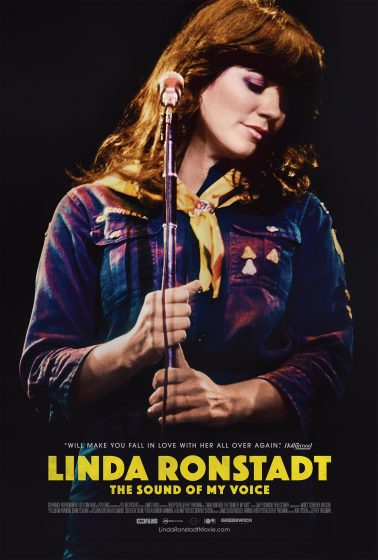
“There’s always music in front of my face. If I was gonna sit and listen to Mozart, (and) someone said, ‘OK, this is gonna be it (you can only listen to Mozart) forever,’ I’d go, ‘OK.’ And if someone was playing me some Mexican traditional music, and they said, ‘This is gonna be it forever,’ I’d go, ‘OK.’ Because there’s enough in any of those things, to (keep me interested).
“Somebody came over to my house the other day with some musicians from Madagascar. They sit down in my kitchen and played this Malagassi music, and it just blew me through the wall! So, if they had said at that point, ‘Well, you’re gonna have to sing a little Malagassi now,’ I would’ve said, ‘Well, OK. Fine!’ I could’ve got right down and sung with them, and had no problem at all. But I can only concentrate on one thing at a time, and if that thin is interesting, I just don’t have any particular need to shift my attention.
“When John Starling comes out to visit me, he sits down at my kitchen table with his guitar, and we start singing. I get pried back to English. But I’d really rather sing in Spanish or Italian. Because all that stuff (bluegrass and country) is based on rural southern pronunciation. And in Spanish – if I’m singing a Latin jazz thing that’s a Caribbean base, I have to push myself from my northern Mexican rural accent into a Caribbean accent, which is painful for me. I find it an unpleasant way to pronounce the language, but I have to do it in order to get the rhythms right. So I do it. I really push myself into that other accent. But I prefer singing in my own accent – the accent of my family’s region. I can just get so much more sound out of my voice in that language.”
Over the course of a career, an artist makes many decisions based upon the age-old dilemma of commercialism versus artistic merit. What the public wants to buy is not always what the artists likes [sic] to paint, play, or sing. Ms. Ronstadt has lately recorded opera, Big Band and Mexican music, none of which usually sells platinum in today’s market. It seems that she has reached a point in which she doesn’t have to worry about selling a certain number of records; her musical decisions are now totally artistic. “Well, they were to start with, too. It’s just that I wasn’t as good at executing them!” She protested with a laugh. “And I find that now. I’m making my choices based on an artistic thing, but I am also finding that my choices were made for me when I was a baby. It’s getting harder, though. I do find that the record companies have a tendency to stick their oar in a lot more now. It’s very nervous-making. Although, the one person that I’ve allowed to submit material and give advice – I don’t always take it, but I always consider it – is (Asylum Records President) Kyle Lehning. He’s an amazing guy! He really, genuinely likes music, first of all, which is rare for a record person. Second of all, he’s extremely knowledgeable, and he has great taste in songs. And he seems dedicated to the idea of trying to save what he can that’s quality, and nurture it.
“(The latest project) started with several nagging phone calls from John Starling!” She laughed. “John Starling doesn’t get down behind traditional Mexican music! And then Emmy calling me, because Emmy and I are such fans of the McGarrigle Sisters. We were talking about doing some television stuff. We were just trying to think of how we could get in the living room together again with John Starling. So we started working on tunes, like the Carter Family songs that only Emmy and I would be interested in. And maybe John Starling or Claire Lynch, or somebody. John had, a long time ago, sent us Claire Lynch records, saying, ‘You really gotta sing with this girl. She’s real wonderful.’ So claire and Emmy and I have done some stuff together.
“And then, I’ve been working with Valerie Carter. She put a record out in the ‘70s. Everybody in Hollywood was after her. She’s an extraordinary singer, and she was exceptionally beautiful. She was about 19, I think, then. Lowell George and Mick Jagger and Jackson Browne and J.D. Souther and Danny Kortchmar – everybody wanted to work with her. Everybody tried to, and then George Massenberg, who is my production partner – who I met through John Starling – did produce a record from her, and so did Lowell George. I sang on it. Then she just had some problems, and she dropped out of sight for about 15 years, which was really a tragedy for us. ‘Cause she’s one of those girls that can sing as well as Whitney Houston. She’s got that kind of chops. But it doesn’t sound like her. It’s a very distinctive voice. But that kind of ability. It was too bad, ‘cause she was (a) really interesting singer. So she’s now been singing on the road with James Taylor a lot. I used her to sing a lot on my last record, that I put out. The blend between her and me and Emmy was just really magical! So we’ve done some stuff together, the three of us.
“But what Emmy and I wanted to do was just explore. See what we could go find out there. We wanted to push the limits a little bit, and see what we could find in terms of texture, combining styles, of things that we liked that don’t always fit in one little (category). Like the McGarrigle Sisters. Where do you put that? It’s not really traditional folk music, and it’s got traditional roots. It certainly isn’t bluegrass. And the sentiment is too unbridled for current pop, ‘cool’ standards. But it’s very intelligent music.
“There’s other stuff that is kind of like that; that’s kind of ‘out there.’ And there’s some stuff that’s just real, real traditional. So we’ve just been fooling around with various singers. And then I sang with Claire Lynch and my cousin John, who’s got a wonderful voice – on two songs.”
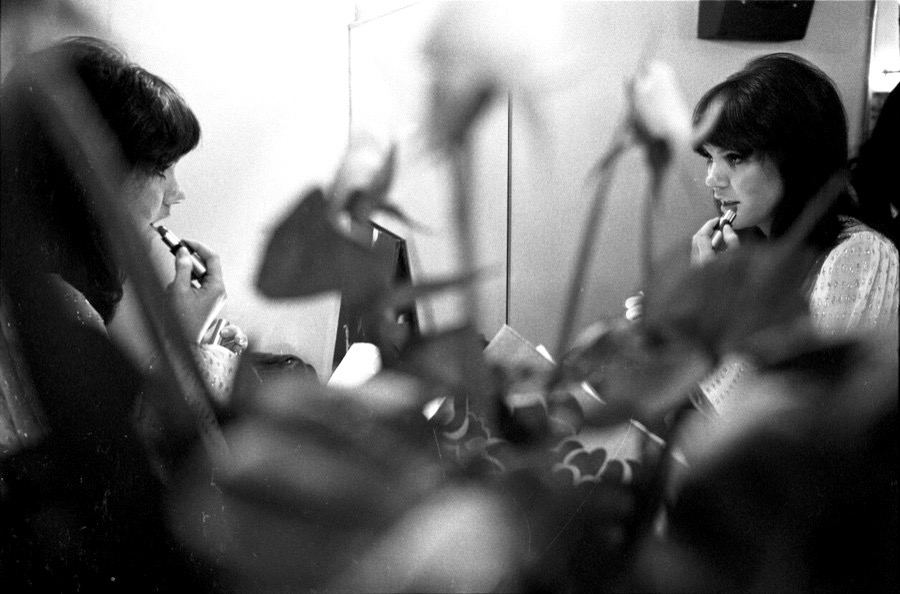
Although she maintains that after a project is finished she doesn’t care what happens, Ronstadt is intensely involved in its creation. “Oh, I mix everything! I do every single thing,” she declared. “I make the record, I do the arrangements, I do the harmony arrangements, I do a lot of the instrumental arrangements. Nothing is done on the record without me being there. But when it’s finished, I never listen to it again. You can take it and throw it off a cliff, for all I care. I’ve heard it and I’ve done it, and that’s the experience; and now I go on to something else. So at that point, I surrender it to the record company, and they do whatever. They can shoot it with a gun if they want to. I don’t care what they do. Long as they don’t shoot me.”
Returning to the topic of bluegrass, Ronstadt commented, “I understand what [the banjo] does, rhythmically. And I appreciate what it does – that syncopated thing; the difference in all those accents.
“I think of the banjo kinda like I think of the trumpet in mariachi, which is: trumpet was brought in about the same time that the resonator was added onto the back of the banjo. It was a ‘radio’ event, and a good one. It was a really good thing; it needed that high end to cut through. But if somebody came to bed and blew a trumpet in my ear, I’d get annoyed! If somebody came to bed with me and started plucking a banjo, I would probably jump right up to the ceiling! But it’s a great instrument in the orchestral blend. It’s really got a great place. And I don’t think the banjo will ever go out of style.
“Those other instruments are a lot more flexible. They can bear a lot more. I’ve really become a complete mandolin fan, ‘cause I’ve been working with David Grisman. I just think he’s a genius. I knew his playing. I knew he was considered a ‘hot chops’ player. I think he plays bluegrass sometimes, but he really predates and transcends all of that stuff completely. I mean, he can play like a classical player. I’ve never heard anybody with dynamics like that, and I’ve never played with anybody that could play with a vocalist; and play little internal harmonies. He just flits around like a little hummingbird – all around the vocal line – and plays a beautiful little harmony for a while, and then he goes off to a rhythm pattern, then he comes back. He has great ideas for voicings, and he has very, very good rhythm ideas. I just love to work with him. I think he’s brilliant.
“You know what I think is missing from bluegrass at this point? And from all that kind of traditional music? Dancing. That’s what I discovered with Mexican music, was that it is dance music. Period. I think, as is fiddle (music). As soon as you uncouple it from (dancing), the music changes. It’s the same way with pop music. As soon as it became recorded music – people started dancing in discos to recorded music – the music stopped being alive, and it stopped changing in a real vital way. Started changing in a more static, strange, mechanized way.
“So my suggestion, to the bluegrass world would be, one should never uncouple that music from dancing. There should always be dancers involved with bluegrass music.”
The author commented that singing is also something that’s been taken away from most people and given only to professionals. “Yeah, it’s an outrage! In Mexican culture, everyone sings,” she responded. “Everyone knows all the words, and they all sing. We sing at the dinner table. Whatever you’re doing, you sing. You sing in a funeral, you sing at a birthday, you sing at a wedding. You sing if you’re happy, you sing if you’re sad. It’s a thing you get to do to help you along with your life. Everyone should sing. It’s a biological necessity. Even little babies sing. I mean, even when they’re pre-verbal, you hear them kind of leaning into a sound.”
(Read part one of “Linda Ronstadt Talks Bluegrass” here.)
Photos and artwork courtesy of Shore Fire Media
Article appears courtesy of Bluegrass Unlimited
Linda Ronstadt Talks Bluegrass (Part 1 of 2)
Barely three minutes into the brand new documentary, Linda Ronstadt: The Sound of My Voice, the viewer is already presented with none other than Dolly Parton, who exclaims, “Linda could literally sing anything.”
Over the course of her singular, era-defining career Ronstadt did sing almost anything — from The Pirates of Penzance to American standards to Mexican folk songs — but she’s rarely referenced in the same breath as bluegrass. The BGS x Linda Ronstadt history notwithstanding, it’s understanding that the twain rarely meet, in conversation and consideration. Of her most easily recognizable hits, among them “Willin’,” “You’re No Good,” and “Desperado,” perhaps “Blue Bayou” is the closest to bluegrass — and in its Ronstadt iteration, less so than in other covers of the languid ballad.
Scratch the surface, though, no matter how slightly, and her bluegrass cred runs deep. This should come as no surprise, given her immaculate performances alongside Dolly Parton and Emmylou Harris on Trio and Trio II — the first song the three sang together, informally, at Harris’s house in L.A. was “Bury Me Beneath the Willow.” The Sound of My Voice digs a little deeper still, reminding that Ronstadt’s very first hit, “Different Drum,” recorded with folk-rock trio the Stone Poneys, was discovered by Ronstadt, who first heard the song from a now almost-forgotten bluegrass band, the Greenbriar Boys.
Elsewhere in the film, Ronstadt mentions that during her early days in the city she frequented Los Angeles’ The Ash Grove, the foremost folk and bluegrass venue there in the ‘60s and ‘70s. She also made appearances and recorded with the Seldom Scene, and remained close friends and musical confidantes with John Starling. One of the last studio recordings Ronstadt ever released was a duet of the Hazel Dickens and Alice Gerrard classic, “Pretty Bird” with bluegrass legend Laurie Lewis. The track was released on Ronstadt’s Duets project as well as Lewis’s The Hazel and Alice Sessions and the pair worked together prior, as well, performing as “The Bluebirds” with Maria Muldaur at Wintergrass Music Festival in 2005.
The bluegrass tendrils are there, undeniably, woven alongside so many other influences and inspirations and impressions that informed Ronstadt’s art. Still, it was surprising to this writer to find that in June 1996 Bluegrass Unlimited, the foremost and longest-running print publication dedicated solely to bluegrass music, had featured a lengthy, in-depth interview with Linda Ronstadt herself. Even by author Dan Mazer’s own admission, “Ms. Ronstadt’s bluegrass/country connection is tenuous at best.” And yet, for nearly five thousand words, the article displays that Ronstadt isn’t just tangentially connected to bluegrass, it is a permanent part of her musical self.
In honor of the new documentary film, and in appreciation of this connection to bluegrass — and in an attempt to shout it from the proverbial rooftops! — we’re reprinting Dan Mazer’s interview with Ronstadt exactly how it appeared in 1996, split into two parts, but in its entirety on BGS. Special thanks to the team at Bluegrass Unlimited for partnering with BGS to spotlight how bluegrass has touched one of the most important and truly iconic voices to ever grace this planet. — Justin Hiltner, BGS Associate Editor
(Read part two of “Linda Ronstadt Talks Bluegrass” here.)
“Linda Ronstadt Talks Bluegrass”
By Dan Mazer. Bluegrass Unlimited, June 1996
While preparing an article on the influence of bluegrass on today’s country music, I had the opportunity to interview several prominent country stars. During discussions with Bluegrass Unlimited’s editorial staff about artists to interview, the name Linda Ronstadt came up.
Linda Ronstadt? It seemed an odd choice at first. Ms. Ronstadt has had a long and varied career, and while her forays into bluegrass with the Seldom Scene have been recognized and celebrated within the bluegrass community, as an artist, she just didn’t seem to fit in with the likes of Marty Stuart, Hal Ketchum, and Patty Loveless. On the other hand, her classic recordings of “Blue Bayou,” “Silver Threads and Golden Needles” and “When Will I Be Loved?” are still copied by country music cover bands some 20 years after their release. Some of her work as also been covered by bluegrass artists.
Because Ms. Ronstadt’s bluegrass/country connection is tenuous at best (especially in recent years, when her recordings have featured opera, Big Band and Mexican music), it was with little hope that I sent an interview request to Ms. Ronstadt’s publicist. To my surprise and delight, the request as answered quickly with a call from the publicist to set an appointment for a telephone interview. Ms. Ronstadt called me from her home in Los Angeles, and graciously granted me a significantly longer interview than we had arranged – that was just because the conversation was so interesting and enjoyable! She is remarkably well-spoken, intelligent and passionate. In the end, we decided not to include Ms. Ronstadt’s remarks in the profile of country artists with bluegrass roots.
Ms. Ronstadt grew up in Tuscon, Ariz. Her family listened to a broad variety of music on the radio. Opera, country, rock ‘n’ roll, and jazz filled the house. Some radio shows also featured bluegrass. “We were right in the pat of XERF, Del Rio, Tex,” she said. “And we (had) the Louisiana Hayride. We were right there, where there was a lot of big transmitters, and not a lot of interference. So I heard (bluegrass) when I was little, growing up.
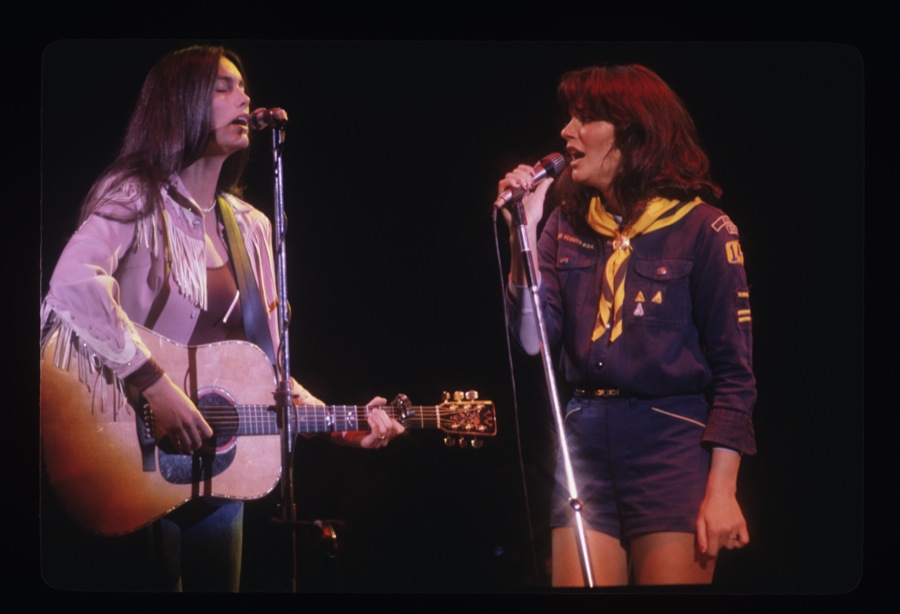
“When we were kids just listening to stuff on the radio, we tried to sing it. My brother and sister and I could always harmonize real early. So we used to sing the stuff we heard on the radio. We heard Bill Monroe, and we heard Flatt and Scruggs, we heard Homer and Jethro doing a sendup of ‘Don’t Let The Stars Get In Your Eyes.’ I had such a cross-section! And then, when I was in high school, I think it really intensified.
“I’ve always been interested in harmony. I’ve always been a harmony singer. When I was a real little child, I could sing harmony. I’m always surprised when children say, when they’re three, that they can’t. But all my brothers and sisters could, real early. I could hear strange harmonies, too. But I understood Mexican harmonies better, and they have a tendency to be very, very clear kind of parallel thirds.”
(Author’s Note: “Parallel thirds” refers to what, in bluegrass, corresponds to the lead and tenor part singing close harmony at the interval called a “third.” Brother duets also feature this harmony.)
As an artist, Ronstadt doesn’t feel authentically connected to bluegrass. “I feel that I would have had to live in the rural south, and grow up in the mountains,” she said. “There’s just such a difference between mountain South and plantation South. Culturally and musically.”
Since she grew up near the Mexican border, and her father is Mexican, Ronstadt mostly sang Mexican music as a child. “There’s a great deal of similarities (between bluegrass and Mexican music),” she noted. “One of them is that the three-part harmony stuff that we sang a lot is Mexican mountain music, and it’s country music. The music of an agrarian lifestyle is what I’ve always been most attracted to. I love it, and having grown up in a kind of isolated, rural setting, it was something that reflected what I was witnessing around me.
“I’ve always had an ear for any kind of a thrilling, wild, high tenor. And again, in Mexican music, there’s a loose parallel, especially up in the mountains, where they sing real high in this falsetto, in the huapango style.
“The language and the pronunciation of the language – whatever the rural accent is – influences the style of singing and the vocal intonation so profoundly! With bluegrass music it was those ways of pronouncing 16th Century English, probably, frozen in those mountains. But in Mexico, of course, it was the indigenous language of nahuatl, which was what was mostly spoken there, which gave the pronunciation and forced the tonality into that nasal thing.
“Also, having to communicate across long distances, you get a real high, ringing (tone). Men get a lot of power out of that high register; way more than women do, which is why – having absolutely nothing to do with sexism –I feel that bluegrass is very wonderful when it’s three male voices. Mariachi music, also (is an example), which is from a different region (Jalisco). But when all those male voices are singing up in the high register, it’s a different sound from a woman’s voice singing up in a more comfortable register. I can sing bluegrass tenor pretty well, but it doesn’t quite have the power that it will ever have from a man forcing himself up way high in that register. It just doesn’t have the same dynamic. It’s still good. I call it ‘pink grass.’”
Until recently, bluegrass has been almost entirely a male reserve. Ronstadt feels that there is good reason for that, although, as she pointed out, “There was old-time music before that, which of course, happily embraced women singers. But I still think it was just that thrilling sound of those male voices in two- and three-part harmony, pushed way, way up high, that really gave it a very distinctive characteristic. And it’s pretty hard to compromise that, regardless of your sexual politics, without making it into something different.
“There are women singers today that have what I think (are) very, very good, and very authentic-sounding bluegrass voices. I think Claire Lynch has a wonderful voice. I love her singing! And those girls that sing with Alison Krauss; the Cox Family. But it’s hard to say. Where do you draw the line? Is that bluegrass, or is that old-time? I think that’s a combination; both things.”
When thinking of acts that embrace and also expand bluegrass, the Seldom Scene immediately comes to mind. Many people argue with some justification that the inclusion of a banjo defines an act as a bluegrass band. Bill Monroe, Flatt and Scruggs, Reno and Smiley and the Stanley Brothers all performed certain songs (usually gospel numbers) without the banjo, but the Seldom Scene broke new ground with their unprecedented, mellow guitar-based sound. Furthermore, because Ben Eldridge’s banjo playing is unparalleled for taste and restraint, the Seldom Scene can be mellow even on tunes that include the banjo. They also distinguished themselves by using Linda Ronstadt as a backup vocalist on some of their earlier recordings. They remain her favorite bluegrass band.
“They really are an urban band with very, very strong rural influences,” she said. “They had all the benefit of a sophisticated, cosmopolitan atmosphere, which Washington, D.C., certainly is, and they were able to refine in any direction they wanted to. I really think they made an extraordinary synthesis. I love that band; I always have.
“Mike (Auldridge) is such a unique player. Nobody sounds like him. He’s got that real beautiful, lyrical, velvet thing that happens, but it’s still got plenty of strength and guts behind it. There are more famous Dobro [resonator guitar] players than that, but I like him the best and I always call him when I want a Dobro [resonator guitar] player.
“John Starling is an exceptional singer, and has a wonderful sense of the groove. He’s a very, very fine guitar player. Emmylou Harris and I both spent so many hours and hours and nights and nights and months and months with him, way on into the night, just grooving on that sound and exploring it! He’s given us a wealth of something. It’s hard to define. But just having that superb musicianship to lean on, and the focus of his sensibility, which is very keen and very well-developed in that direction.
“I remember getting snowed in at John Starling’s house with Lowell George, and Emmy, and Ricky Skaggs (in 1974 or 1975). Fayssoux Starling was there, who was a good singer. And we sang forever! I mean, we sang all night, and they were there for three days. I was sick, so i was there for a month, they were there for three days, and in that time, Ricky Skaggs taught me a whole lot about how to sing bluegrass harmony. I knew a little bit about it, but he really showed me how the suspensions worked, and it helped me to refine it a lot. I understood (the suspensions), but didn’t know quite how to really imply them. He Walked me through ‘em, and after that, I had ‘em.”
(Author’s Note: “Suspensions” is a musical term referring to creating tension in a chord by sounding a not that is not in the chord, and then releasing that tension by lowering the dissonant note. For example, a guitarist will sometimes play a “D” chord and add a high “G” note on the third fret of the first string for one measure, then release that fret, so that the “F#” note rings.)
Ronstadt is surprised that she is sometimes cited within country music. “I was never a country singer,” she stated. “I never thought of myself as a country singer. Always very surprised if anybody else did. I was a pop music singer, and I used various root forms that were acceptable to me, and that was one of the things that was readily acceptable to me.
“I’ve always had a little rule about my singing. If it wasn’t there in the living room by the time I was eight years old, it generally won’t be very successful if I take a swing at it, at least to my standards. But thanks to the radio, there was a lot of stuff in play by the time I was eight. And thanks to the fact that my family has very eclectic kind of taste, anyway.
“So, when I came into pop music, I played songs that I loved. I didn’t care whether they were written by George Gershwin or Hank Williams. A song that would really inspire me for one reason or another, I’d try to sing it. And I’d always try to put it into its appropriate setting. So if it (was) a bluegrass song, I’d try to put it in that kind of setting, and I knew enough about the mechanics of how it worked, so that I would do that. Then there were these singers and players that I really admired, and tried to emulate. But that thrilling high tenor sound, there’s just nothing like it.”
The closest Ronstadt has come to recording bluegrass in recent years was on the “Trio” album, which featured her along with Dolly Parton and Emmylou Harris. A follow-up recording was eagerly anticipated, but never materialized. “The ‘Trio’ record became so difficult, schedule-wise, that we all gave up,” she said. “But Emmy and I did quite a lot of singing together. We had a great time! See, Emmy and I started out with this idea to do a record together, where we would use some guest artists. And we sort of progressed down that road, but it never got to where everybody would agree on a release date. Everybody did agree at some point, but the people kept changin’ their minds.
“But Emmy and I really are kind of locked on to each other musically. Emmy and I have sung some stuff together that’s gonna be on my record; Emmy and I have sung some stuff together that’s gonna be on her record. And we also did some stuff with Valerie Carter, who’s just a great singer.”
Ronstadt’s bluegrass influence is definitely shown in her current release.
(Read part two of “Linda Ronstadt Talks Bluegrass” here.)
Photos courtesy of Shore Fire Media
Article appears courtesy of Bluegrass Unlimited
Nitty Gritty Dirt Band’s Jeff Hanna Reflects on ‘Will the Circle Be Unbroken, Volume Two’
Why mess with a classic? That was the original thought from a few members of Nitty Gritty Dirt Band when the idea was presented to record a sequel to their seminal 1972 album, Will the Circle Be Unbroken.
However, with encouragement from one of the group’s biggest fans, the legendary June Carter Cash, the recording sessions for Will the Circle Be Unbroken, Volume Two commenced in the winter of 1988, with a cast of accomplished musicians who are now considered cornerstones of Americana music.
Often referred to simply as Circle 2, the acclaimed project was released in 1989 and went on to win three Grammy Awards and a CMA Award for Album of the Year. To commemorate its 30th anniversary, Jeff Hanna shares its back story with the Bluegrass Situation.
Editor’s Note: Jeff Hanna and guest Sam Bush will participate in a screening of clips from a documentary film, The Making of Will the Circle Be Unbroken, Volume Two, at the Country Music Hall of Fame and Museum in Nashville on Wednesday, September 11 at 11 a.m., during AmericanaFest.
BGS: Can you explain why Circle 2 is such an important album for the band?
Hanna: It’s important in our history because at that point, we were no longer just the kids. We were all in our early 20s when we did the first Circle record, making music with those revered folks. And so we had a different point of view, somewhat. Here we were in the midst of our mainstream country career, and we still revered the first album.
The way we viewed Circle 1 was like something untouchable – just leave it. It is what it is. As time went on and as that project matured, it mattered a lot to a lot of people, including us. So we resisted the concept of doing another Circle record. Especially me, Jimmy Ibbotson, and Jimmie Fadden. Bob Carpenter was like, “I didn’t get to play on the first one! I wasn’t in the band! I want to do it!” He was pretty excited about the concept, and Chuck Morris, our manager at the time, brought it up a bunch. But we waited a while, and by the time it came out, it was 17 years between the releases.
When did you decide to move forward with it?
We were on tour with the Johnny Cash show, which included the Carter Family, and we were in Europe. I think it was in 1988 in Switzerland. June came into our dressing room — and she would visit us a lot. She was really sweet and she loved to talk about Mother Maybelle, and how much she loved us. She called us “them dirty boys.” I love that. And at the end of the conversation, she said, “You know, if you all ever thought about doing another Circle record, John and I would really love to take part in it.”
That was the tipping point. If you have that sort of endorsement from folks we idolized, and who were so important in the history of this music – and music in general — we thought, “Well, there you go.” That’s what we did. The winter of ’88, we started making calls.
How did you come up with the guest list, so to speak, for this one?
Our approach was to delve more into the next generation of folks, like New Grass Revival, and certainly a lot of our singer-songwriter buddies, like Bruce Hornsby, John Hiatt, Rosanne Cash, and John Prine. We had only recorded a little bit with Emmylou Harris and we really wanted to work with her. And we were really excited to do a record with Levon Helm. That was one of the highlights.
I think the collaborative spirit of this album really shines through when Bruce Hornsby is playing “Valley Road” with you guys.
I’d never met Bruce Hornsby but I was a huge fan of his music. I heard “Every Little Kiss” on the radio and it just blew me away. But then I’m reading an article in a magazine, and it was a “desert island disc” thing, talking about the records that you’ve gotta have, and he mentioned Will the Circle Be Unbroken. It was like, WOW! So I somehow got his phone number, I called him up — cold-called him — and he said, “Oh yeah, man, I love that record, I love you guys.” I said, “You’ve seen us play?” He said, “Yeah, my brother and I sneaked in.” We were playing a college show in his hometown, and those guys started carrying amps into the venue. We were unloading the truck and they started carrying gear in, and ended up sort of hiding behind the bleachers, and when the show started, came out and watched the show.
We hit it off right away, so there’s a direct line to Circle 1 right there. And when we were putting together our core band for the sessions, of course we included our buddy Randy Scruggs (who was on the first Circle album), Roy Huskey Jr. (whose dad Junior Huskey played on the first album), Jerry Douglas, Mark O’Connor… It was so much fun walking in and making music with those guys every day. Chet Atkins is on a track and played one of my guitars, which I liked. I know I’m never selling that guitar.
One of the coolest tracks on there is “You Ain’t Goin’ Nowhere.” How did that come about?
We brought in Roger McGuinn and Chris Hillman, because the Byrds and the Flying Burrito Brothers were so important to us. The Byrds had done Dylan’s “You Ain’t Goin’ Nowhere,” but they wouldn’t play it on country radio, so we cut a version of “You Ain’t Goin’ Nowhere” with Roger and Chris, and it became a Top 10 country single, which we thought was cool redemption. We were really excited about being on the track with them. We still play that tune now and again. That’s one of our favorites. We’re really happy to have a good excuse to play it, because for years we played it in sound checks anyway.
It’s been 30 years now, but what do you remember about how Circle 2 was received upon release?
Perhaps because we had the platform of being a hit country band right about then, the label promoted the heck out of the record when it initially came out. And it had hits on it, that’s the other thing. Circle 1 didn’t really have any radio impact, whereas Circle 2 had “You Ain’t Goin’ Nowhere,” and we had a song called “When It’s Gone” that was a Top 10 single.
It’s a significant record and it’s funny, having been there from the get-go with this band, and having that first Circle record so deeply ingrained in my DNA, I sometimes forget how important Circle 2 was to a lot of folks. I’ve had more than one songwriter and musician tell me, “That’s what got me into you guys.”
BGS Presents 30 Years of ‘Will the Circle Be Unbroken, Volume Two’ at Americanafest
What started as a music video concept for the Nitty Gritty Dirt Band evolved into a 1989 full-length film documenting the all-star recording sessions for Will the Circle Be Unbroken, Volume Two. Nitty Gritty Dirt Band co-founder Jeff Hanna will present a rare screening of clips from The Making of Will the Circle Be Unbroken, Volume Two at the Country Music Hall of Fame and Museum on September 11 at 11 a.m., during AmericanaFest.
Hanna will be joined by bluegrass virtuoso Sam Bush, who appears in the film and on the album with New Grass Revival. Craig Shelburne, managing editor of the Bluegrass Situation, will moderate.
Produced by Joanne Gardner Lowell and Rosanne Cash, the film captures the band in the studio recording their groundbreaking project. Select clips will show performances by Johnny and June Carter Cash; Jerry Douglas; Emmylou Harris; Bruce Hornsby; Jimmy Martin; New Grass Revival; John Prine; Earl Scruggs; Randy Scruggs; Ricky Skaggs; and others. Will the Circle be Unbroken, Volume Two won three Grammy Awards as well as the 1989 CMA award for the Album of the Year.
Three decades after its release, Joanne Gardner Lowell offered some keen perspective on the film through an email interview with the Bluegrass Situation.
BGS: What was it about the Nitty Gritty Dirt Band and this project that made it a compelling film subject for you?
JGL: ACME Pictures was contracted to make a video for the title track. This is pretty common. We signed the contract and when I asked what day during the multi-week schedule this song would be done, Jeff said, “All of them.” When I realized we would need to go to the studio every day for weeks to get this song, it seemed obvious we should shoot the whole experience — so we did.
How would you describe the mood, or the vibe, in the room during these sessions?
It was joyful in the studio. Each day the musicians came so ready to create and collaborate. We were honored to be in the room with it all. Being live made everyone really stay on top of their game. It felt like a family reunion on many days, and there was always a lot of humor and laughter. Our primary director, Bill Pope, captured so much of the mood with his amazing camera work.
It was also shot during the holiday season, so people were in a happy mood. Emmylou brought a handmade Christmas ornament you can see hanging in some of the shots. And my partner Rosanne Cash came into the studio with her newborn Carrie. I don’t think she was even two weeks old. Rose handed her to me and I held her tight while running sound for the track Rose and John Hiatt did together. Carrie never made a peep!
It was crucial to capture the acoustic nature of these sessions. What was your audio setup like?
I had a simple Nagra tape recorder just to have an edit track to work from and to record interviews. I had a single mic that I would place in the room to catch all the conversation, as some of that was obviously not recorded for the album and we wanted it for the film. Although, during our interview with Emmylou Harris, the band loved what she said so much that those comments ended up on the album.
Do you remember any particularly fun encounters with the legendary musicians in the film?
We caught some great moments and they’re in the film. The ending of a fast-paced “Valley Road” with Bruce Hornsby was a favorite. The band all stops for a second to look at each other — then they realize they got it and they all start shouting and cheering.
After Jimmy Martin’s session one day, he went out for some cocktails and came back into the studio while Ricky Skaggs was working. We captured Jimmy (feeling no pain and wearing a coonskin cap) as he and Ricky ripped into a spontaneous version of “The Old Crossroads.”
This film was Mr. Acuff’s last filmed appearance and that was special. I have to say — each time the song “Will the Circle Be Unbroken” was performed, it was magic. Every single time.
The Dirt Band did a masterful job of keeping things upbeat and fun for everyone. Every one of them was so engaged in each song — and brought individual songs or artists to the project. They were like marathon runners, giving their all each day and then coming back the next day to do it again.
What were some of the hurdles you faced in the film’s creation and release?
The very existence of this film was due to a California record company exec telling me that we would be in breach of contract if we didn’t deliver this video for the agreed-upon budget. When I explained this “song” was going to require us to shoot for several weeks, this delightful woman didn’t seem to care. I think it was meant to be — we HAD to make it work.
Bill couldn’t figure out how to light the dimly lit studio without a pile of light stands in every shot — and in everyone’s way. So, he created a giant light box and hung it from the ceiling. You don’t see a single light stand.
We didn’t have any money to sync up the video with electronic slates or fancy editing gear. I moved a cuts only 3/4″ video editing system into my office and had to sync the shots up by eye more than once… if we didn’t have an audio track running. Watching Mark O’Connor’s fingers or Earl Scruggs’ fingers to make sure you lock each note made for some very long nights. Those fingers were flying!
Rosanne and I sold 50 percent of the film rights to a company who released it on home video. Unbeknownst to us, the entire archive of that company was acquired by another company that isn’t interested in letting us buy the remaining rights, so we remain in limbo.
What do you hope a modern viewer will experience when watching these clips 30 years later?
This is a piece of living history. The first Circle album influenced every single musician I know. Watching the creation of the second — especially thirty years on — reminds you what kind of power music has.
It makes me sad to count off how many artists from this project are gone now: Johnny Cash, all of the Carter Sisters, Earl and Randy Scruggs, Vassar Clements, Chet Atkins, Levon Helm, John Denver, Roy Acuff, and dear Roy Huskey, Jr. In this world of instant technology, I think this 30-year-old film puts the viewer right into the studio for a front row seat at this amazing recording. I’m very proud of it.
22 Top Country Duos
Country music was made for duets. Not only because those tight, tasty harmonies are a foundational aspect of the music, but also because country accomplishes heartbreak — and every other make and model of love song — better than almost any other genre. (Thought quite possibly better than all other genres.) It just makes sense to have two singers, one to play each role in a lost, soon-to-be-lost, or (rarely) divine, never-perishing romance. But the format isn’t restricted to lovers or their placeholders, it can just as seamlessly fit heroes and acolytes, parents and children, siblings, peers, fellow pot smokers, and on and on.
Take a scroll through these twenty-two country twosomes:
Kenny Rogers & Dolly Parton
We couldn’t have this list without these two. They should be the start, middle, and end of any definitive list of country duos. So we’ll just make the easy choice and kick it all off with Kenny and Dolly — that extra intro about their friendship and the years they’ve known each other? Swoon.
Loretta Lynn & Conway Twitty
After saying what we did about Kenny & Dolly we knew this pair needed to come next — so as to not rile anyone. Out of countless duets we could have chosen, how could any top “You’re The Reason Our Kids Are Ugly?”
Willie Nelson & Ray Charles
For inexplicable reasons people tend to forget Ray Charles’ incredible forays into country. His collaborations with Willie are stunning for the extreme juxtaposition of their voices and styles — they feel and swing so distinctly and differently, but all while perfectly complementary. “Seven Spanish Angels” ranked a very close second to this number in our selection process.
Glen Campbell & John Hartford
The most-recorded song in the history of recording? It’s said “Gentle On My Mind” holds that honor. And goodness gracious of course it does. Here’s its writer and its popularizer and hitmaker together.
Lee Ann Womack & George Strait
Together, Lee Ann and George were beacons of the trad country duet form, especially in the ’90s and early 2000s. This one from the jewel in the crown of Lee Ann’s discography, Call Me Crazy, is crisply modern, but with decidedly timeless vocals.
George Jones & Tammy Wynette
A broken, country fairy tale of a love story, George and Tammy’s relationship was infamously fraught, but damn if that didn’t just make their duets ever more… ethereal. Which doesn’t justify that Tammy Wynette kinda pain, to be sure, but it does remind us that if country can do anything better than all other genres, it can be sad.
Reba McEntire & Linda Davis
One of the best country songs, duets, and music videos EVER MADE. Theatrical and epic and a little silly and downright catchy and Rob Reiner and… we could go on forever.
Tanya Tucker & Delbert McClinton
Tanya is back with a brand new album and its well-deserved level of attention has been helping to re-shine the spotlight on her expansive career. Forty top ten hits across three decades. Who does that? Here she duets with Delbert McClinton on their 1993 hit, “Tell Me About It.”
Alan Jackson & Jimmy Buffett
Hey, if this has to be stuck in our heads for the rest of the month, it should be stuck in yours, too. Fair’s fair. It’s only half past [whatever time it is], but we don’t care.
Johnny Cash & June Carter Cash
One of the most recognizable duos in the history of the genre, immortalized not only in their discography but in a film adaptation of their love as well, Walk the Line. We all know “Jackson” as familiarly as the ABC’s, so here’s a slightly lesser-known beaut. (Keep watching til the last verse for an adorable bit from June.)
Eric Church & Rhiannon Giddens
Country is at its best when it surprises us. This collaboration is certainly, on the surface, unexpected, but the message of the song isn’t the only way these two artists can relate to each other. Over the course of their careers they’ve both fought their way from the fringes to the centers of their respective scenes. More of this, please.
Dolly Parton & Porter Wagoner
Dolly got her start with Porter Wagoner on his television show in the 1960s. They can certainly be credited with pioneering, popularizing, and epitomizing the country duet format. One of her most famous hits, “I Will Always Love You,” was written for Porter as she lamented leaving their act to go totally solo. (We’re a little glad she did.) You can tell they sang this song just a few gajillion times together, give or take.
Pam Tillis & Mel Tillis
Father/daughter duos in country aren’t as common, but they certainly aren’t unheard of. Pam and Mel are a perfect example. (The Kendalls are another.)
Patty Loveless & Ralph Stanley
Patty Loveless received the first ever Ralph Stanley Mountain Music Memorial Legacy Award in 2017 at Ralph’s home festival, Hills of Home, in Wise County, Virginia. Patty and Ralph were longtime friends and collaborators during his lifetime and even through her mainstream country success she referenced bluegrass and Ralph as influences — and she cut a few bluegrass records as well.
Alison Krauss & James Taylor
It’s. Just. Too. Good. Like butter. Like a warm bubble bath. Like floating on a cloud. Two voices that were meant to intertwine.
Charley Pride & Glen Campbell
These two were made to sing Latin-inflected harmonies together, weren’t they? Charley Pride gets overlooked by these sorts of lists all too often. But dang if he didn’t crank out some stellar collaborations, too!
Gram Parsons & Emmylou Harris
“Love Hurts” and boy, if Gram and Emmylou don’t make you believe it heart and soul and body and being. The definitive version of this Boudleaux Bryant song? Perhaps.
Willie Nelson & Merle Haggard
Icons being icons. And friends. And amazingly talented, ceaselessly musical comrades. You love to see it. (We could’ve/should’ve chosen “Pancho & Lefty.” We did not.)
Vince Gill & Amy Grant
There are quite a few reasons why the Ryman Auditorium basically hands this husband and wife duo the keys to the place each December. Basically all of those reasons are evident in this one. It’s fitting that this video came from one of those Christmas shows, too.
Dolly Parton & Sia
Dolly literally outdoes herself, re-recording “Here I Am” for the original soundtrack for her Netflix film, Dumplin’, after she first cut the Top 40 country single in 1971. Clearly she and Sia have much more in common than an affinity for wigs; their soaring, acrobatic voices seem so disparate in style and form until you hear them together. Listen on repeat for the best therapeutic results.
Robert Plant & Alison Krauss
[Insert entire Raising Sand album here, because how could we ever choose?] Lol jk, here’s “Killing the Blues.”
Carrie Underwood & Randy Travis
Cross-generational, meet-your-hero magic right here. Little did we know what was in store for Carrie Underwood then. But the way Randy looks at her up there, you can tell he knows she’s goin’ places.
